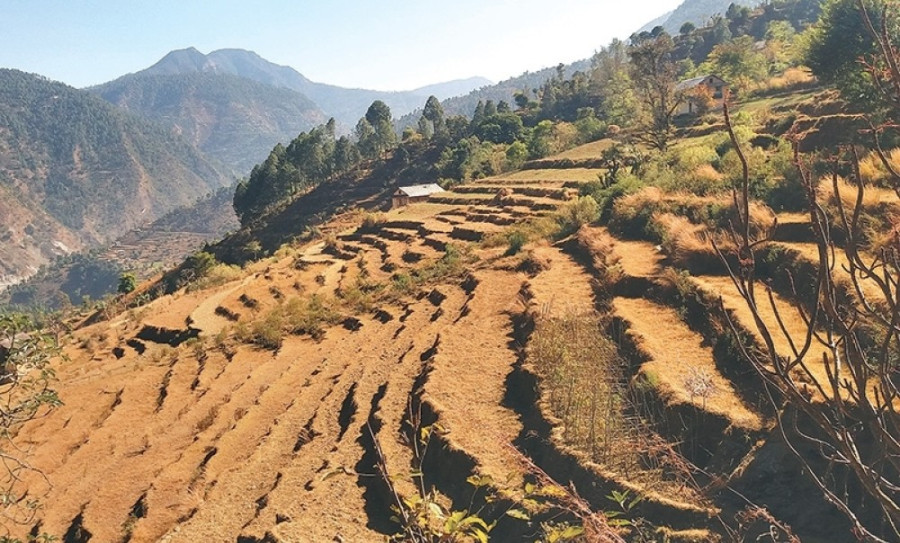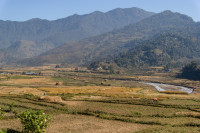Columns
The missing fight to preserve soil
We have failed to address the degradation of farms and farming systems.
Madhukar Upadhya
Unlike in the past, the government’s proposed annual budget for the fiscal year 2025-26 has been largely praised by the private sector and critics alike as it is expected to address the economic challenges and boost the private sector’s confidence. Remarkable as this is, we must ask: Will this budget help address domestic agriculture and the nearly inescapable downward spiral of declining productivity, considering the ongoing sluggish economic growth and high unemployment rates?
The agriculture sector is the largest employer in the country, and its improvements will surely benefit many people. However, even after six decades of agriculture being the national priority, the budget still reflects low agricultural productivity and the worrying trend of youth migration. This assessment mirrors the issues identified by Nepal’s first agriculture conference in 1958: The migration of youths from the hills to seek jobs abroad due to the deterioration of farms and farming systems, only to return home when they are old and weak.
Unfortunately, it appears that we have failed every decade to address the core issue—degradation of farms and farming systems—that has plagued our agriculture for a long time. As usual, the budget focuses on regular programmes including fertiliser imports, mechanisation and modernisation, which will only be effective when the degradation of farms stops. Under the given circumstances, one wonders how our agriculture will fare in the face of the growing threats of climate change that can further degrade our farmlands.
Land degradation
It might be astonishing, but our food system relies almost entirely on the top six inches of soil in our farmlands. After receiving adequate moisture, these mere inches produce 95 percent of our food. Healthy soil is a core requirement for any profitable agricultural pursuit. Sadly, this very foundation, assumed to be stable and strong by the agricultural programmes, is mired in problems. Perpetual soil erosion and periodic debris deposition during the monsoon, coupled with the imbalanced use of chemical fertilisers and pesticides resulting in over-extraction of nutrients, have collectively led to the accelerated degradation of our soils. Even in areas where farmers can’t access chemical fertilisers and pesticides, the land has noticeably degraded due to the high rate of soil loss, landslides, surface failures and nutrient loss. Floods are recurrent in the valleys and low-lying areas, depositing sand and silt and sometimes boulders on farmlands.
Consequently, we are in an endless cycle of unexciting farm outputs leading to out-migration, causing a shortage of labour leading to a further decline in care for land and eventually to its abandonment—an age-old and ongoing story of Nepal’s agriculture. A cursory look across the middle mountains and in the narrow valley along the foothills of the Mahabharat hills shows hundreds of thousands of hectares of abandoned farmlands, many of them buried under debris or washed by gullies or landslides, unrecognisable from the land that once produced food. Yet, agriculture programmes have never considered degradation of farmland as a serious impediment to our agricultural growth.
Land degradation is much discussed in environmental academic circles but is least addressed by programmes because the linkages between land degradation and crop productivity are often neglected. No attempts have been made to gauge the national cost of land degradation; however, if regional figures are anything to go by, it costs our economy at least $200 million annually.
Land degradation was a major environmental issue in the 1970s and 1980s. Its relationship with agriculture was a favoured subject of planners. However, when it came to the measures adopted to reduce land degradation, they largely remained limited to planting trees, which had little to do with agriculture. In the 1990s, the environmental discourse broadened, following the Rio Summit, which centred climate change as a major concern. At the same time, the popular movement of 1990 and the subsequent restoration of democracy and the new altered political scenario emphasised infrastructure development. The old institutions and established knowledge in addressing soil erosion and watershed issues were sidelined or, in some cases, revoked altogether.
Rising food imports
Recently, a High-Level Commission on Economic Reform, formed to recommend required actions to guide economic transformation, submitted its report to the government while the budget was being prepared. Regarding the improvement in the agriculture sector, the commission acknowledged that over 60 percent of the population is engaged in agriculture, comprising about 24 percent of the GDP. Even with decreased cultivated land—about 300,000 hectares between 2000 and 2019—rice and wheat production have increased. Nevertheless, there is a deficit of one million tons of rice in meeting our annual national demand. Maize and millet production have decreased, but fisheries have made remarkable progress—a fourfold increase in the land utilised by fish ponds. The number of farmers operating fisheries increased from 17,000 to 42,000 in 10 years. Despite these achievements, the consistently rising food import bill, from Rs150 billion in 2015-16 to nearly Rs379 billion in 2021-22, tells that all is not well with our agriculture sector.
Given the uncertainty of the emerging weather patterns, the prospects of food imports are becoming increasingly unreliable over the years. When India banned food exports following the global food crisis in 2008, we had to make special requests for concessions, to which India responded positively. But it may not always be so. Whether it is a global price hike, heavy rains destroying ready-to-harvest crops or growing geopolitical distrust, whenever there are problems in countries from which we import food, we pay the price. Hence, there is a need to fix this domestic issue across every corner of the country to improve agricultural productivity.
Back to land and water
With increasing climate impacts, Nepal’s agricultural problems have undoubtedly grown manifold. In such a situation, attracting youths towards the sector will be challenging. But there are some silver linings. Indigenous knowledge and land and water management techniques are gaining traction under the highly praised approach of nature-based solutions. They are crucial in addressing complex issues, especially in the context of climate change for sustainable development. These techniques also offer a better and holistic understanding of land and water issues in agriculture. If we aspire to be self-reliant on food security again, authorities responsible for agriculture must take decisive steps to help revive these traditional techniques and, if needed, complement them with modern knowledge to address land degradation across Nepal’s diverse geography.




 19.12°C Kathmandu
19.12°C Kathmandu















